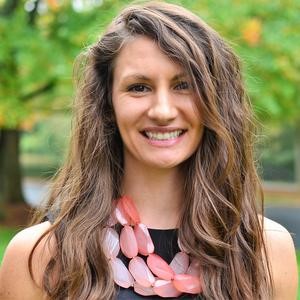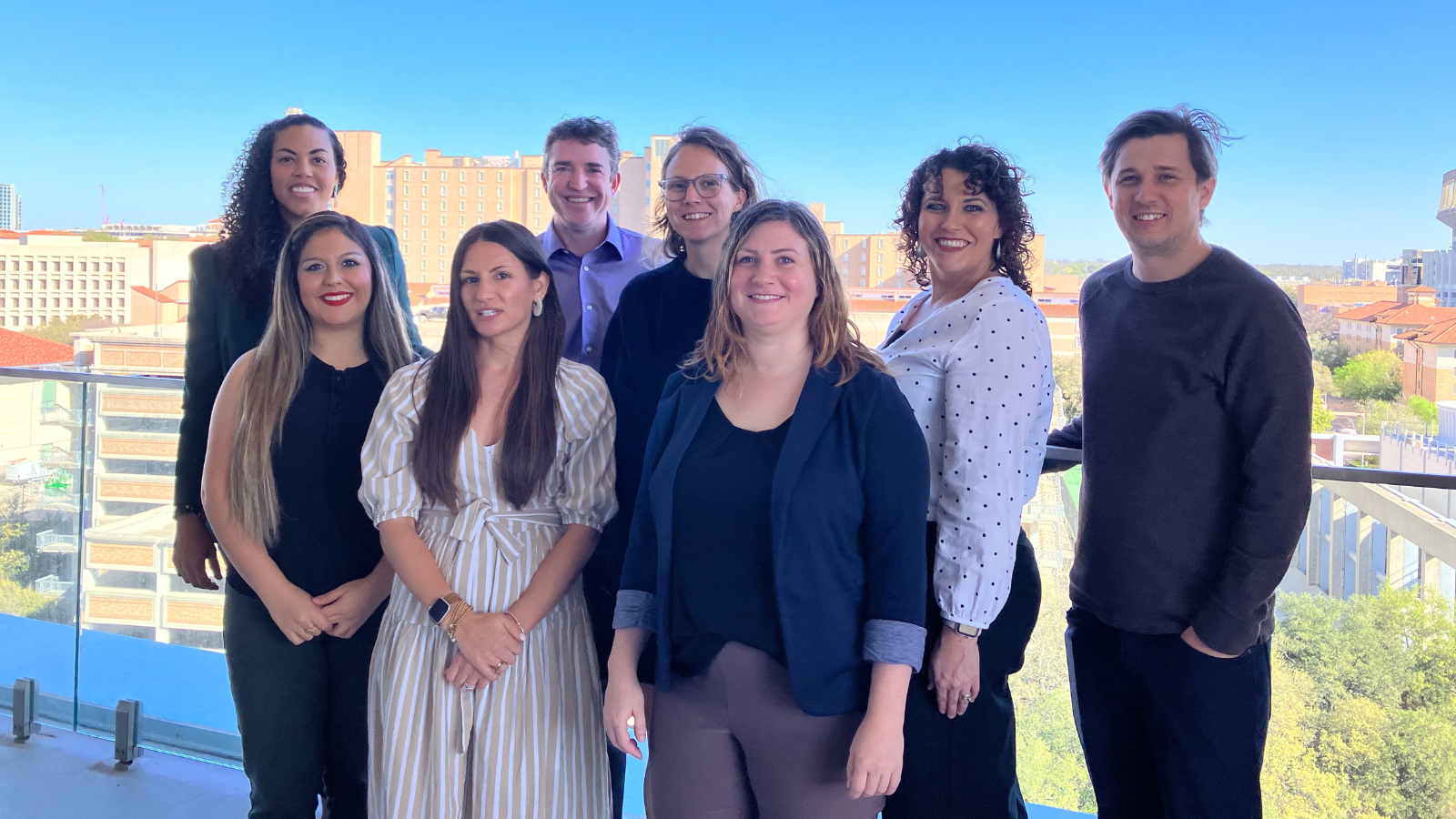Kelly Bloodworth, Epidemiologist, Centers for Disease Control and Prevention
Published: May 10, 2023

Last month, the UTHealth Houston School of Public Health in Austin partnered with the CDC Science Ambassador Program to host a regional training workshop for public high school and middle school teachers in Central Texas. One of the CDC epidemiologists leading the training was UTHealth SPH graduate from the Austin Campus, Kelly Bloodworth. After the training, we had the opportunity to chat with Kelly to learn more about her experiences as a public health practitioner and the path that led her to her current work with the CDC.
Past experiences: What influenced where you are today? What were your interests as a young person? Was there some key event or experience that pushed you towards a career in public health?
KB: I didn’t even know what public health was until I started pursuing graduate programs. After college, somewhat unsure of what career path to pursue, I moved to South Florida to teach. I taught middle and high school science and math. I loved the energy of it—yes, it was exhausting, but it also filled me up to see lightbulbs going off on science concepts that it took me years to learn. My classroom approach was simple: I wanted to teach content in a way that students could apply it to their lives right away. As it turned out, I was teaching using a public health lens. At least that is what my sister-in-law told me. She was right—many of the analogies, scenarios, and activities I used to teach math and science drew from public health topics. So, when it came time for my next steps, I started asking myself how I could do this better and serve even more students than only those in my classroom. This is when I started looking into graduate programs in public health. I quickly fell in love with the work being done at UTHealth Houston School of Public Health in Austin. At the time (2010–2012), it was a small program with faculty research and programming focused on adolescent and school health. It was the perfect fit. I could finally put my thumb on how my education in biology, pre-med, and women & gender studies and my passion for teaching could come together.
Research approach: What thoughts can you share about the mindset and approach needed to effectively address problems through research?
KB: To help tweak, tailor, and grow the programs that I oversee, we heavily rely on program evaluation. It can be humbling. Sometimes well-thought-out, evidence-based strategies don’t work for your audience. Sometimes you think you are coming up with something innovative that is going to escalate the whole program and it fails completely. The value of using evaluation and research is that for every failure, you learn how to make small adjustments that eventually improve the quality and effectiveness of the program. It can be a rollercoaster though. It’s important to understand that in research, a failure or unexpected outcome can be just as insightful as a success. The important part is that the insight gained is ultimately used to improve the program, which can then be more effective at helping people become healthy. That’s the big picture—keeping that in mind helps drive the success.
In the now: At the moment, what current project or task motivates you to get out of bed every morning?
KB: During the COVID-19 pandemic, we partnered with the CDC Foundation and a group of classroom teachers to write a middle and high school STEM curriculum focused on epidemiology and public health topics (called CDC NERD Academy). We released the project in 2022 and I have spent the last year traveling to meetings, conferences, and trainings sharing it with colleagues, partners, teachers, and anyone who will listen. It’s the curriculum that I wish I had when I was teaching—it has animated videos and engaging activities that teach students the underlying science and math behind public health. As part of our roadshow across the United States, we are partnering with schools of public health to offer teacher training on how to use the curriculum in the classroom. Recently, we partnered with UTHealth Houston School of Public Health in Austin where we trained approximately 40 Austin-area teachers on how to teach public health in the classroom. This was a nostalgic experience for me—to be teaching teachers a subject that was taught to me by the UTHealth professors standing the back of the room. At the end of the training, one of those professors, who happened to also be my advisor, still remembered me as the teacher. From a student to colleague, a decade dissolved. Jokingly, he mentioned to others that “I turned out okay” and then, more seriously, to me said that he was proud of me. The credit for the successes we have had bringing public health to the classroom belongs to the teachers we have worked with over the years—but I, too, am proud of how far we have come.
Fast forward: What’s one thing you have on your personal/professional list of things to achieve at some point in the future?
KB: As a teacher and a public health professional, my goal is to make education in public health even more accessible to students from all corners of the country regardless of race, ethnicity, nationality, gender, gender identity, religion, culture, sexual orientation, disability, or background. Curriculum and teacher trainings are just the start—there is still a lot of work to break down barriers, to build up curricula and resources, and to support integration of content into classrooms.
What I know now: What is perhaps the biggest realization you have had in your time as a public health professional, or what piece of advice would share with anyone looking to begin a career in public health?
KB: The biggest realization would probably be that the best and most effective public health practice is done through collaboration and partnerships. Programs that do well are founded in evidence and theory but are also dynamic and tailored for the specific audiences that they reach. Throughout my time in public health, I have worked with a vast array of professionals from laboratory and social scientists, biostatisticians, and psychologists, to translators, media and communications specialists, community leaders and, of course, educators. They have each brought something unique to the table.
My best piece of advice for those looking towards a career in public health is to realize that it does not have to look like any other career in public health.
Kelly Bloodworth is a CDC epidemiologist who leads educational student programs and partnerships focused on attracting young people to the field of public health. She designs and directs programs ranging from equipping STEM teachers with public health knowledge and resources to bring back to the classroom to introducing medical and veterinary students to applied epidemiology through experiential learning. She also supports CDC STEM efforts as a subject matter expert for the agency and by coordinating strategic partnerships to advance STEM education. Prior to CDC, she conducted global health research on adolescent health in Brazil, worked with a NPO as a K–12 program director and consultant in Texas, and taught middle and high school in Florida. She earned her MPH from the UTHealth Houston School of Public Health in Austin.




Discussion